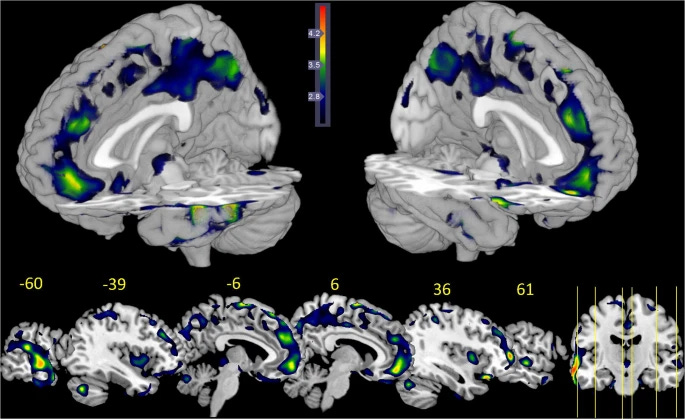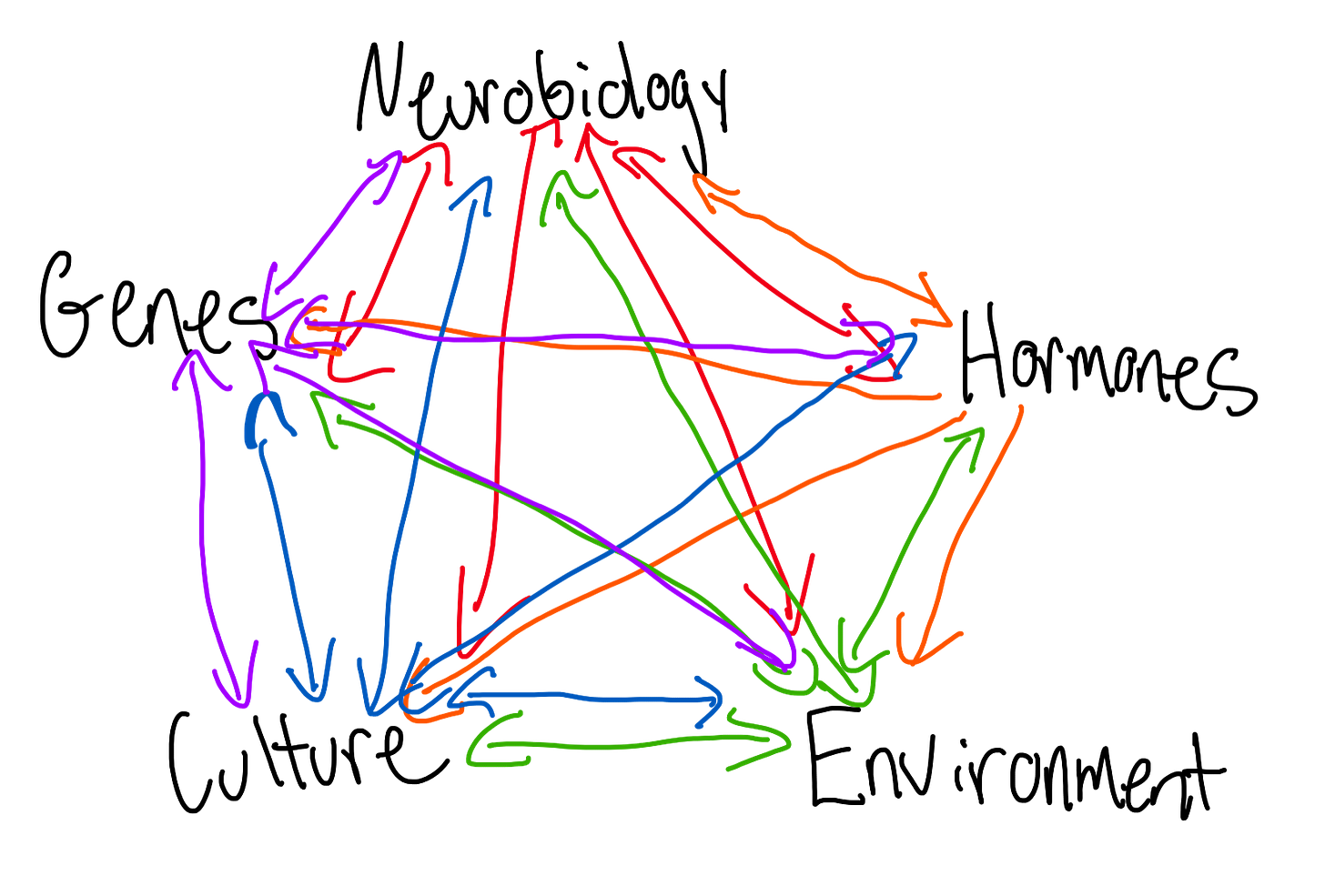Last week I wrote about the Cirus Tent of Behavior which was a way to organize our thoughts about how our biology and environment determine how humans behave. In brief, I argued that we can essentially organize our thoughts on behavior into five tentpoles, but that those tentpoles are not necessarily “categories” but rather overlapping ideas with fuzzy boundaries. If you missed last week’s newsletter, definitely go read it because this week we are going to be applying that model to one of humankind’s most despicable behaviors: murder.
Neurobiology
The first tentpole of behavior is neurobiology which seeks to understand what happens in the moments before a behavior. On the topic of murder, neuroscientists such as Kent Kiehl from the University of New Mexico have sought to understand whether violent criminals have differences in the structure and neuronal connections in their brains when compared to non-violent individuals. From Dr. Kiehl:
“It’s not an uncommon thing for [incarcerated people], while they’re getting a scan, to be like, ‘I’ve always been different. Can you tell me why I’ve always been so different?”
Dr. Kiehl attempted to answer this question under the domain of neurobiology by using an MRI to look at the differences in the grey matter between violent criminals and non-violent non-criminals. After scanning over 800 brains, Dr. Kiehl’s team found differences in grey matter density in several brain areas including the orbitofrontal cortex, medial prefrontal cortex, and anterior cingulate cortex. The figure below highlights the regions that were different between the groups in blue/green:
The regions highlighted have been shown previously to be important for one’s theory of mind which is the cognitive ability to recognize that other people have distinct minds outside of our own experience. This skill typically emerges in young children and is present in high-order organisms as one tool for empathizing with others and being socially competent.
Hormones
The next tentpole is hormones which can tell us what happened in the hours/days leading up to a behavior. On the subject of violence and aggression, behavioral neuroscientists at Leiden/Amsterdam Center of Drug Research found in rats a positive feedback loop between hormonal stress responses and aggression mechanisms in the brain. The researchers electrically stimulated the aggression-control centers of rat brains and looked for stress hormones in the blood. Alternatively, they also administered stress hormones and looked for increased activity in the aggression-control center.
The result? Changing one variable reliably affected the other providing strong evidence that each are causally linked to each other. This can lead to a positive feedback loop between stress and violence in which chronic stress makes someone more aggressive which makes them more stressed, etc…
Environment
Outside of molecules interacting in our body, our environment can of course have an influence on our behavior. The propensity for violence has been studied in the context of childhood development for decades. For example, one study found that up to 40% of chronically violent adults witnessed extreme parental conflict as a child. Many violent individuals have been exposed to violence at a young age, sometimes having to bear witness to the murder of their parents.
Moreover, extreme childhood neglect can have a profound influence on the rest of the child’s life including an inability to form secure attachments and feel safe which can lead to violence.
Culture
Societal norms and culture can affect how we respond and think of violence. One group of researchers predicted that societal rates of corporal punishment of children may predict societal levels of violence. The team of researchers tirelessly reviewed anthropological records of over 186 cultural groups worldwide and independently rated them for attributes such as frequency and harshness of corporal punishment of children, interpersonal violence amongst adults, etc...
In the end, they found that more frequent use of corporate punishment of children was present in cultures with higher rates of inculcation of aggression in children, warfare, and interpersonal violence.
Genes
Zooming out even further to the timescale of millions of years of evolution, there has been recent progress on the genetic contribution to one’s propensity for violent crime. For example, one study led by Professor Jari Tiihonen analyzed the genes of 895 Finnish criminals and found that mutations in two genes were present in the group of criminals that committed a violent crime like homicide and were not present in the non-violent criminals.
One gene coded for the protein Monoamine oxidase A which assists in dopamine and serotonin metabolism. Mutations in this gene could lead to abnormal levels of these critical neurotransmitters. The other gene was CDH13 which is important for the structural integrity of neurons.
Conclusion
As you can see, the application of our circus tent model for behavior provides a much fuller picture of the underlying biology and environment behind murderous behavior. As I wrote before, these tentpoles have messy boundaries. There is no single “murder gene” that guarantees someone will develop into a violent criminal. The expression of genes is affected by our environment and development, our culture, and the chronic expression of hormones. Our culture can affect our sexual behavior and the genetics of the next generation which in turn influences our neurobiology. These are just a few ways in which these tentpoles overlap in fascinating ways.
On a personal note, this kind of thinking has had a significant impact on how I think about justice, forgiveness, compassion, politics, and more. I’m on a journey to sort out my worldview on these important issues and I encourage all of you to see how neuroscience and psychology can help orient your views on the world and challenge your intuitions and assumptions. One of the hardest things to do is try and understand why someone acts or thinks in a certain way that is so obviously counter to you that it’s as if they are saying the sky is red.
Thanks for reading and following my journey.
🤔 Questions or comments? Just hit “reply” to this email!
⚡️If you know someone in your life who might enjoy my writing, I would be extremely grateful if you would share this free publication with them:





